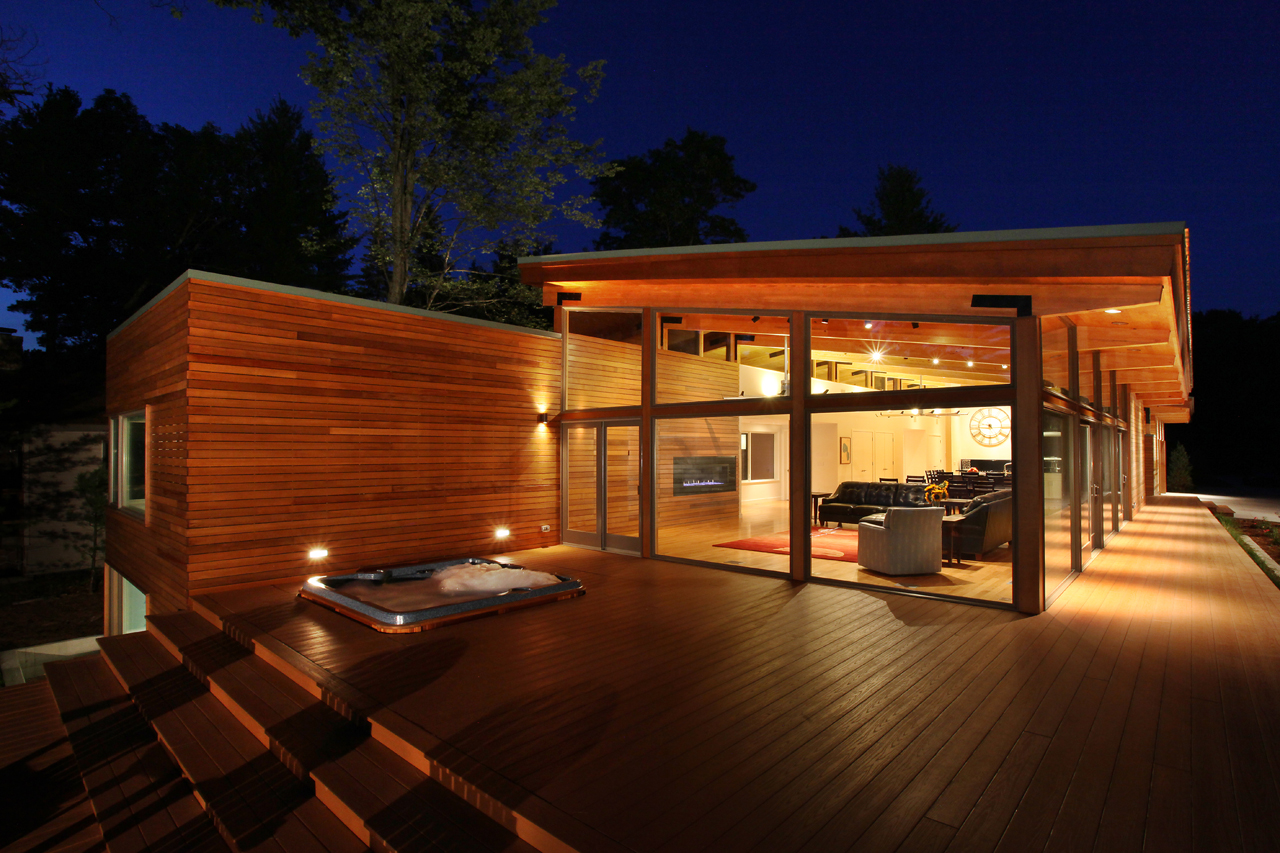Architizer's A+Product Awards is open for submissions, with the Extended Entry Deadline fast approaching on Friday, February 23rd. Get your products in front of the AEC industry’s most renowned designers by submitting today.
Surface mounted light fixtures have been a staple piece of design for decades. Their immense strength lies in their flexibility, since they can be installed in almost any space without dramatically altering the ceiling, and are available in endless shapes and sizes.
This week, Architizer spoke to Matt Schroeder of Delta Light. According to Schroeder, when it comes to architectural lighting, “surface mounted fixtures are typically used when there’s low plenum,” which describes the space between the structural ceiling and the dropdown ceiling, “or when there is an exposed ceiling made from a concrete slab.” In these cases, it is often impossible to integrate recessed fixtures.
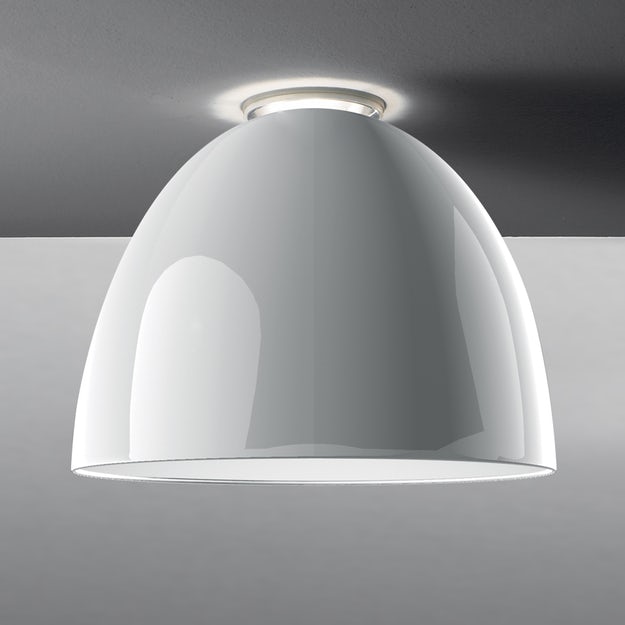
NUR Ceiling Light by Artemide
“Although there are exceptions to this rule, in good lighting design, you’d typically prefer to have a recessed product in lieu of a surface mounted product,” said Schroeder. Recessed products make for a much cleaner look. “Exceptions might be traditional architecture — French Renaissance, for example — where you are looking to have a surface mounted product that sculpturally matches the space,” said Schroeder. In modern spaces where minimalism is not such a priority, surface mounted fixtures can serve as a visual focal point.

Naramata Cabin by Robert Bailey Interiors; Lighting by Delta Light, Bocci and Prandina
Surface Mounted Lighting Systems
All of the following types of light fixtures follow the same type of mounting technique and can be broadly defined as surface mounted lighting.
Pendant Mounted: A pendant light is a fixture that is suspended from the ceiling by a cord, chain or metal rod. Less bulky and often more affordable than chandeliers, pendant lighting has become a popular choice among architects across diverse typologies. According to Schroeder, “pendant lighting makes up 80-90% of the surface mounted products sold at Delta Light.” For more information on pendant mounted lighting, check out An Architect’s Guide To: Pendant Lighting.
Ceiling Mounted: Ceiling mounted lights can be categorized into flush mounted and semi-flush mounted. A flush mounted light has no gap between the ceiling and the fixture, as pictured above. Semi-flush mounted lights are very similar, however they have a small gap between the ceiling and the fixture, which makes it similar to a pendant light, without hanging quite as low. Both flush and semi-flush mounted lights are good for creating ambient lighting and are highly appropriate in instances with low ceilings, since they do not take up a lot of space.
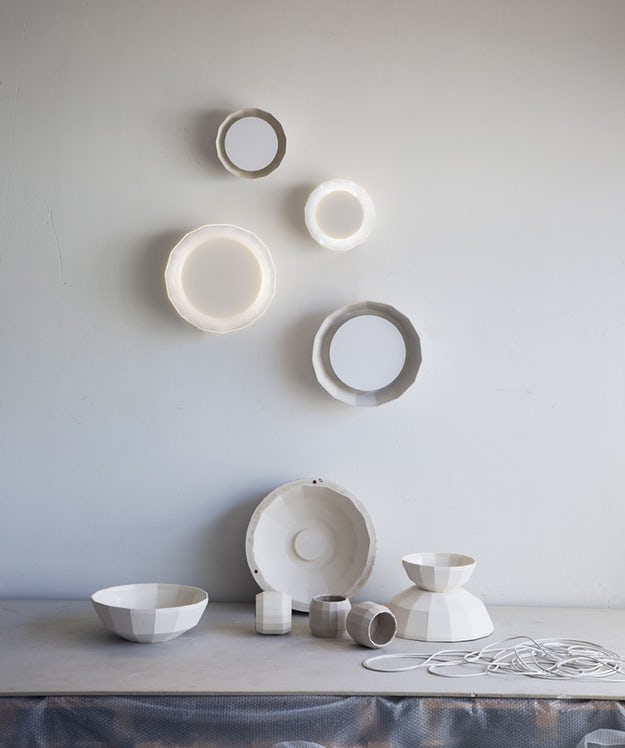
Scotch Club by Marset
Wall Mounted: Sometimes referred to as a sconce, this type of lighting is affixed to the wall, and can be used to cast upward, downward or diffuse light. Today, wall mounted lights are commonly harnessed for exterior illumination.
Track Mounted: With track mounted lighting, said Schroeder, “you pull a wire out from the ceiling, connect it to the fixture and snap it into place. The fixture acts as a horizontal extension of the electrical signal,” said Schroeder. Track mounted lighting can provide general or focused, task lighting.
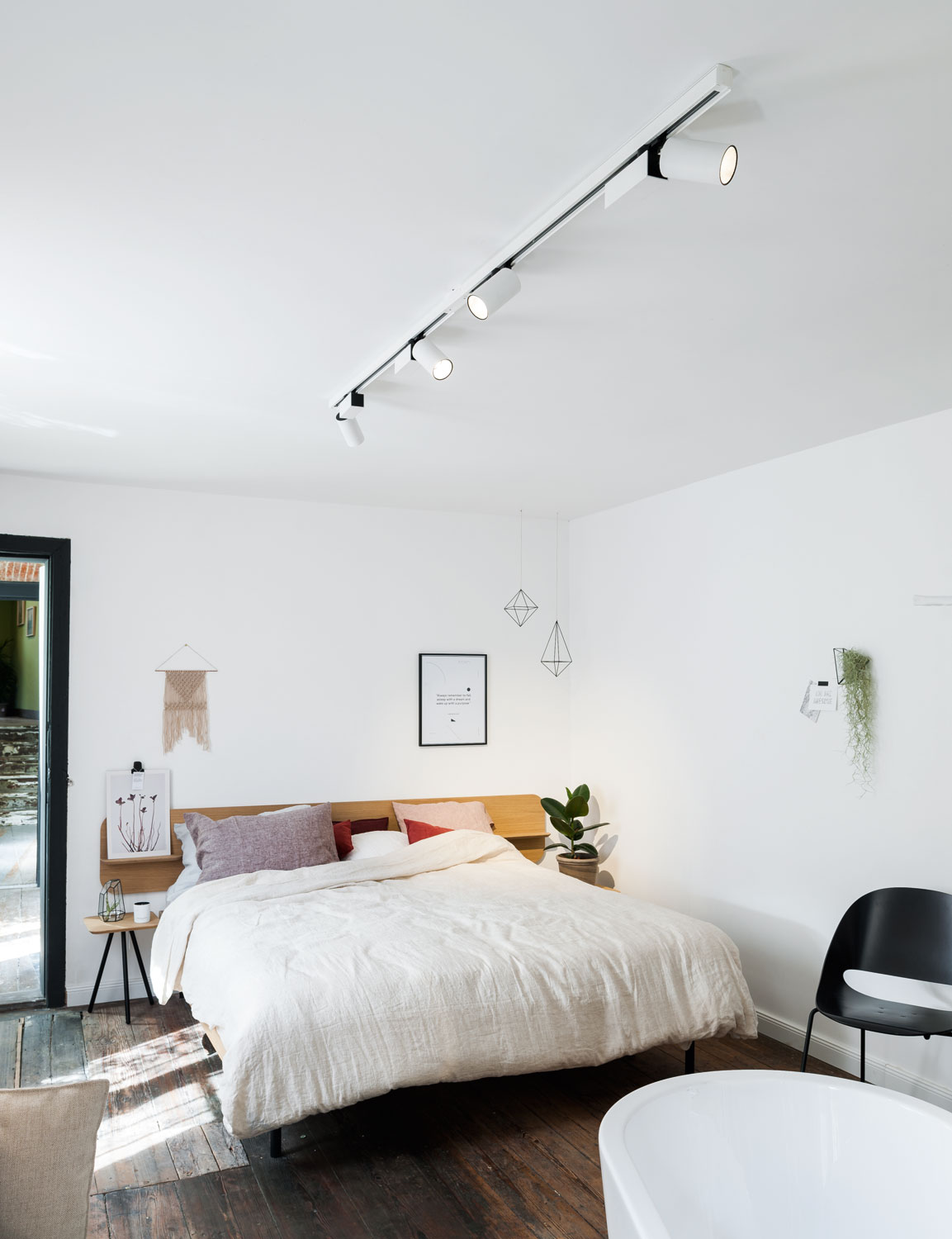
Roomin.be by Sofie Vertongen; Image via Delta Light
Components
Surface mounted lighting products have many of the same elements as recessed products — the main difference is that they’re mounted onto the surface of the ceiling or wall, rather than housed within it. Similar to pendant and recessed lighting, there is not always good or consistent nomenclature in the complex world of lighting. However, a few key terms to look out for in your product search are:
Fixture: The fixture is the shell that holds the light, and is typically made from aluminum, steel or brass. Because the fixture is the portion of the light that is visible, it will drive the aesthetic composition of your surface mounted light.
Heat Sink: Although LED lights are lauded for being cool to the touch, they still produce heat that must be conducted or dissipated away, in order to ensure the longevity of the product. Typically made from copper or aluminum, heat sinks are an important part of LED surface mounted products as they provide a path for heat to travel from the LED light source (or diode) to outside elements.
Diode: The diode is the chip that produces the light. With advancements in LED technology, diodes are becoming smaller and smaller, which presents new design opportunities for architects. “I’ve seen LED tape only a quarter of the size of a nail file, that produces enough light to act as the sole light source for an entire space,” said Schroeder.
Optics: Similar to recessed lighting, optics modify the light that is emitted from the diode by adjusting the beam or softening the glare.
Driver: Sometimes referred to as the power supply, the driver is the “magic box that transforms electricity from main voltage into whatever the fixture itself requires. If you run 120 volts to LEDs, for example, they’re going to explode.” Lighting manufacturers will be able to direct you towards an appropriate power supply, depending on the fixture that you select.
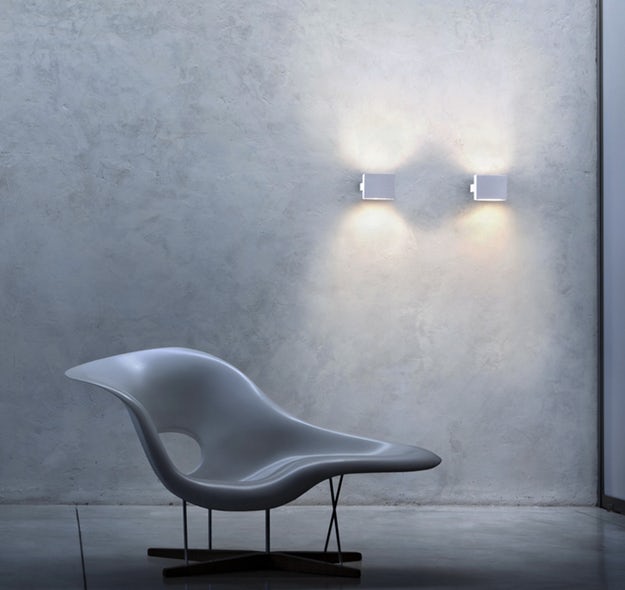
Tight Light by Flos
Aesthetics
With surface mounted lighting, explained Schroeder, “it’s about picking the form and finish that the architect likes and that matches the space, and then putting the lights in the right location to achieve the best effect.”
Finish: No matter what type of surface mounted lighting you are working with, common finishes include painted, powder-coated and metal-plated. For further inspiration, take a look at Architizer’s collection, More Than Surface Deep: 5 Lighting Fixtures That Truly Stand Out.
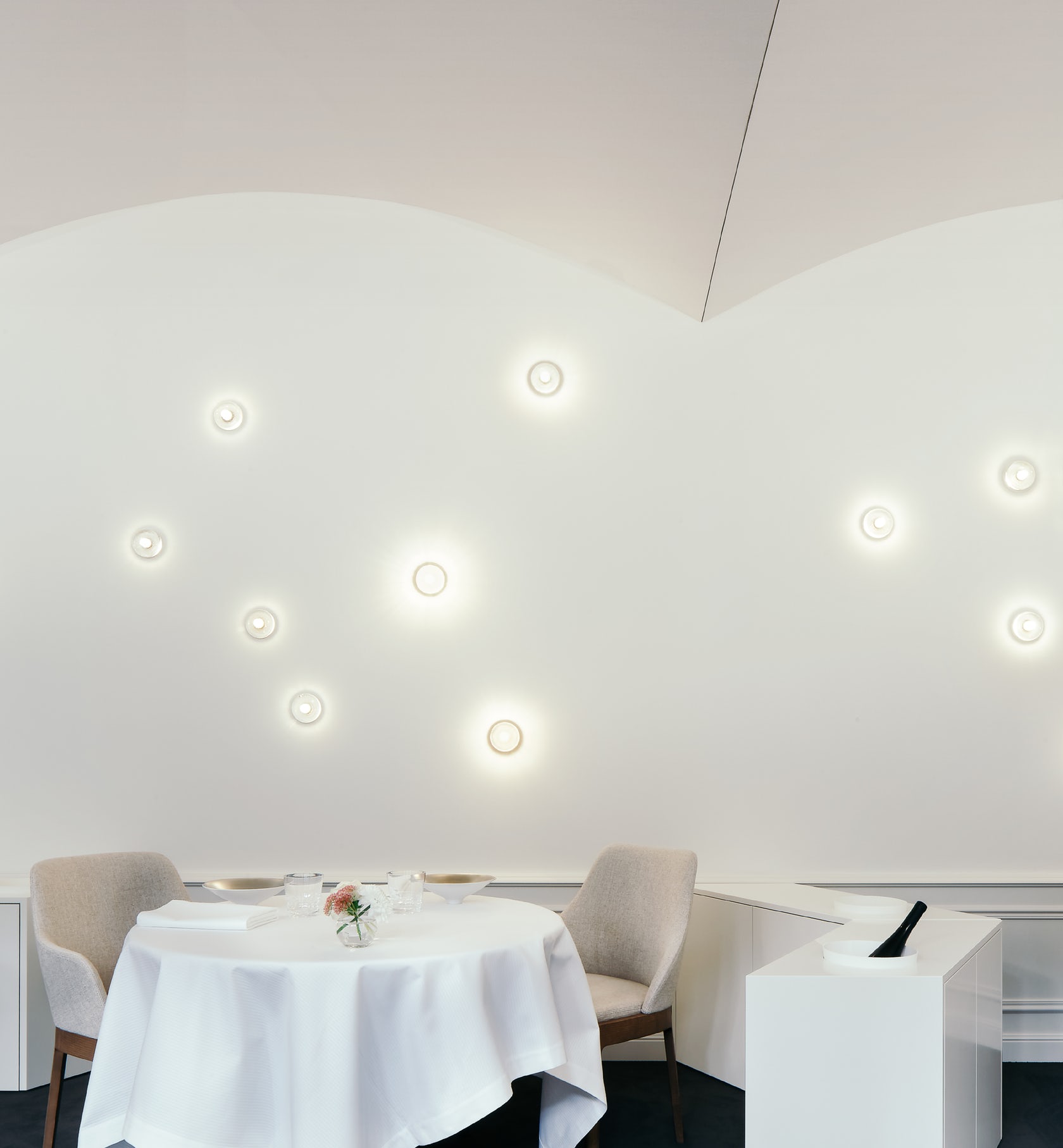
La Maison des Têtes by f+f architectes; Lighting by Bocci
Light Distribution: Some surface mounted fixtures come with a variety of optical options that allow you to control how light is distributed.
- Beam Angle: Narrow beam angles provide more direct lighting, while broader beam angles allow for a greater spread of light.
- Reflectors/Louvers: Reflectors can cast light upward or downward, while louvers and baffles soften light to produce more ambient lighting.
Material: “Today, 80% of the manufacturers that I see are using aluminum. It’s light, durable and paintable,” said Schroeder. “On the lower end, you also see plastic, which I do not recommend, and on the higher end, you see brass and electropolished stainless steel.”

Orgeval by f+f architectes; Lighting by Waldman
Performance
Dimmers: Dimmers can be paired with surface mounted products to have great control of the ambience in a space and to ensure a lower energy usage throughout the day.
Environmental Performance: Light fixtures can be energy efficient, as indicated by ENERGY STAR certification (available nationally) and Title 24 compliance (in California). LEED credits are also available for surface-mounted fixtures that incorporate Integrated Control options, as listed in the Sensors section of this guide.

Image via Novalinea Bagni Interior
Installation: One of the advantageous aspects of surface mounted lighting products is that most rooms are already equipped to accommodate them. To install a surface-mounted fixture, you do not need to open up the ceiling, which makes them very common in the remodel setting.
IP rating: The IP rating is a double-digit number that indicates the protection factor of any lighting fixture. The first digit indicates the protection from solid objects and dust, while the second digit indicates the protection from moisture.
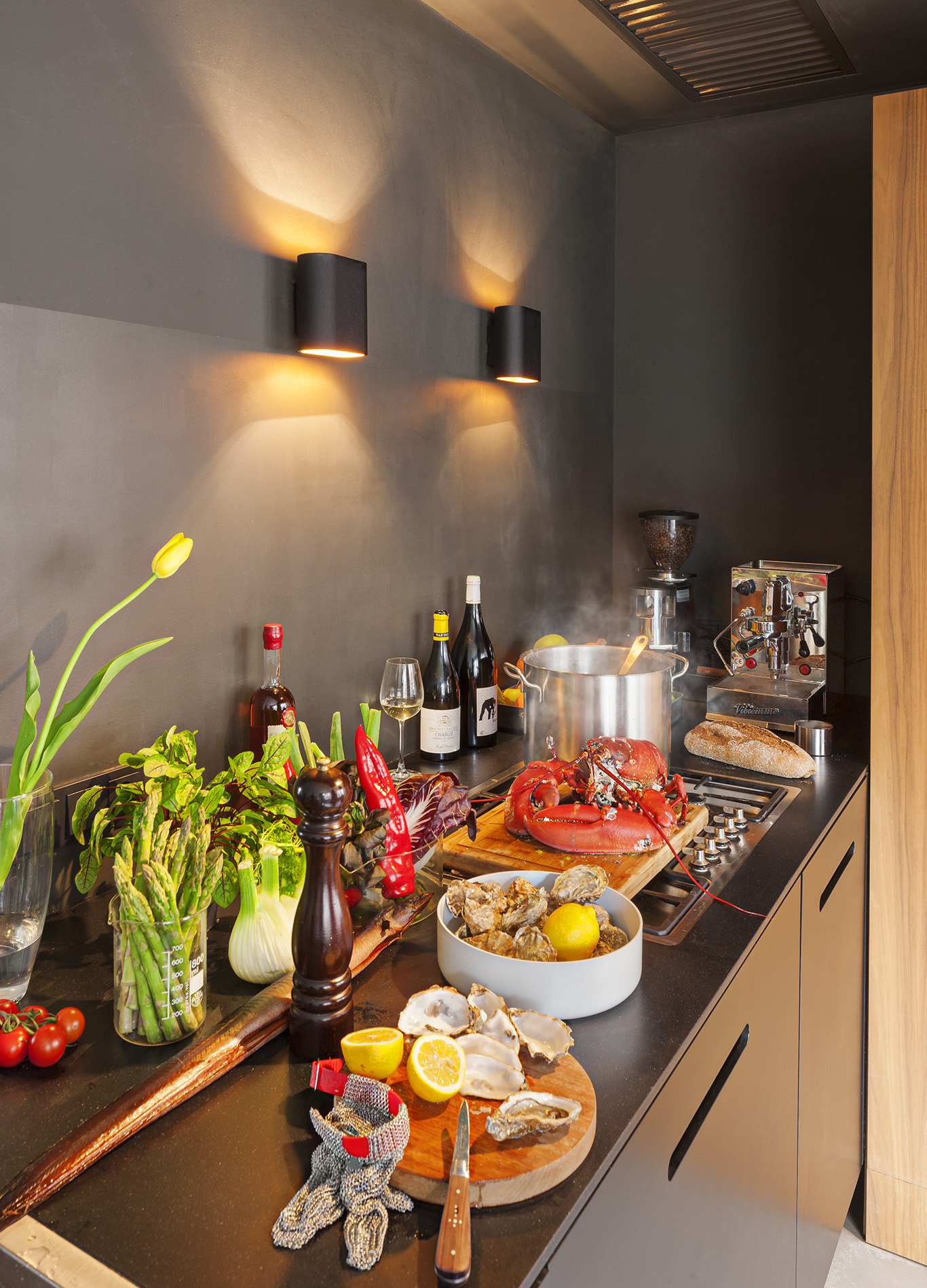
Duell by Modular Lighting Instruments; Image via Modular Lighting Instruments
Sensors: Ceiling fixtures can be configured with sensors that help optimize the lighting of the space and reduce energy consumption. With daylight sensors, maximum lamp output is reduced according to the available amount of natural light. When a room is vacated, occupancy sensors ensure light will be turned off after a programmed delay.
Case Study
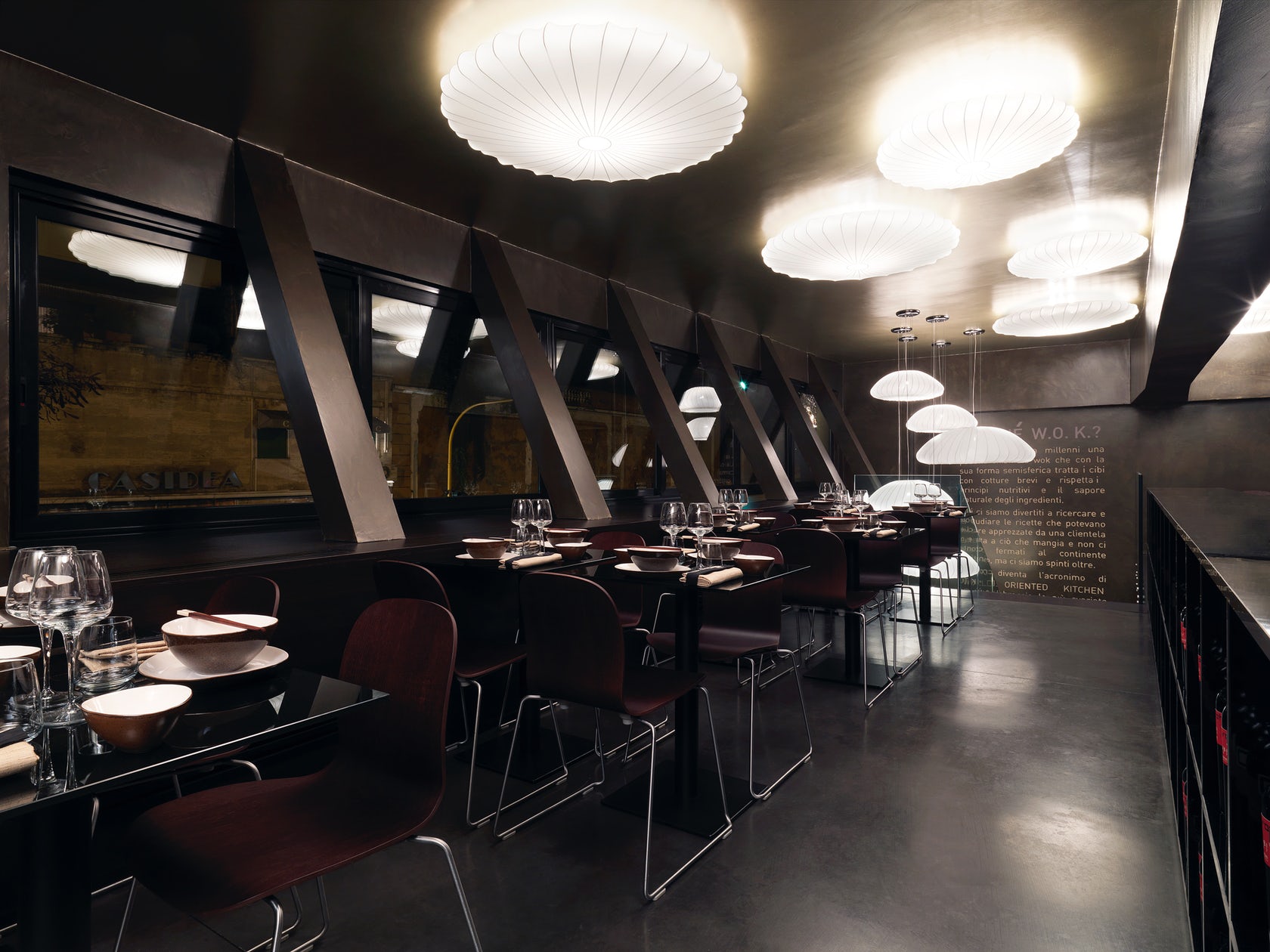
W.O.K., World Oriented Kitchen by Colli + Galliano Architetti; Lighting by Axo Light
More Than Surface Deep: 5 Lighting Fixtures That Truly Stand Out
There are countless shapes, sizes and finishes that lighting solutions take. When it comes to surface-mounted light fixtures, the shape and the materials used in their assembly are just as important as their luminous qualities. Surface-mounted lights not only introduce added shape to surface planes, but also work with the push and pull of light and shadow to define space itself. As you consider which surface-mounted light fixtures to select for your next project, take in these five luminaires for inspiration.
Architizer's A+Product Awards is open for submissions, with the Extended Entry Deadline fast approaching on Friday, February 23rd. Get your products in front of the AEC industry’s most renowned designers by submitting today.
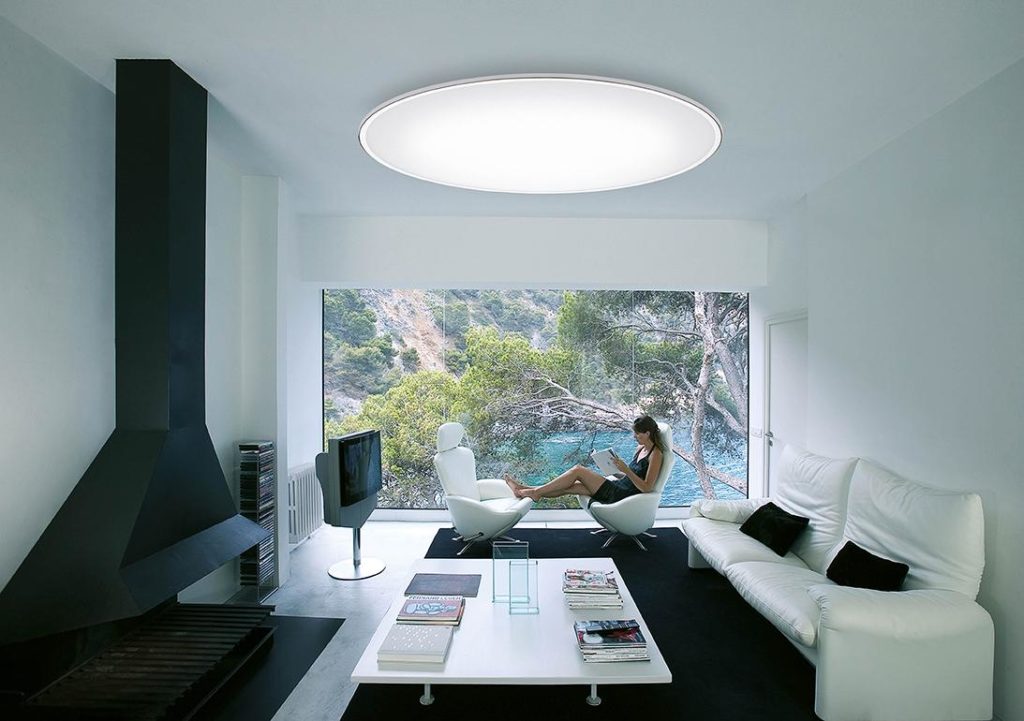





 Naramata Cabin
Naramata Cabin  Orgeval
Orgeval  W.O.K. world oriented kitchen
W.O.K. world oriented kitchen 
